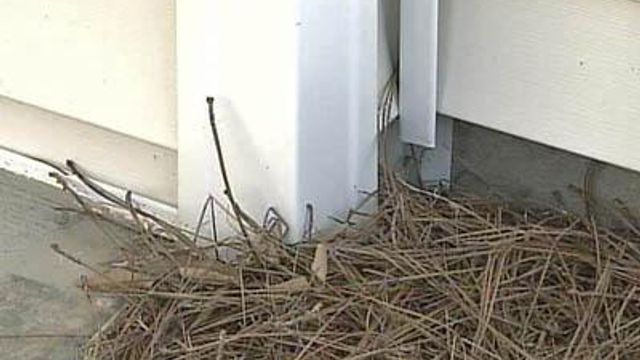Townhouse Fire Could Alter Landscaping Rules
The Raleigh City Council has put off discussing a report that recommends updating the city's building codes until Raleigh Fire Department officials can review the report.
Posted — UpdatedAfter a discarded cigarette sparked a Feb. 22 fire that destroyed 30 townhouses in the Pine Knoll Townes complex, the city paid an independent consultant $17,000 to study the fire and possible changes to city building codes.
"We never want to see that kind of fire again," Mayor Charles Meeker said.
A report issued by the consultant last Friday described how the blaze bypassed firewalls between units in the complex by passing through the attics.
The report also recommended two changes to the building code:
- Requiring that combustible material, including pine straw, be placed at least 10 feet away from residences.
- Making soffits – the paneling on the underside of eaves – fire resistant.
The report suggested that the Pine Knolls Townes fire might have been less severe if those requirements had been in place.
The state Building Code Council temporarily banned combustible soffit materials after the Pine Knoll Townes fire, and the panel is expected to make the ban permanent at its next meeting.
City Council members said Wednesday they would like the Raleigh Fire Department to file its own report on the consultant's findings and recommendations, noting they would discuss both reports at their next meeting.
"It's imperative to look at the things we can control because there are so many things that we can't," Raleigh Fire Chief John McGrath said.
The report suggested using large pine bark as a mulch because it is the least flammable of the four most common mulches. Flames spread 95 percent more slowly through it than than through pine straw, the report said.
Smaller pine bark and cypress mulch also are less combustible than pine straw, the report said.
• Credits
Copyright 2024 by Capitol Broadcasting Company. All rights reserved. This material may not be published, broadcast, rewritten or redistributed.





